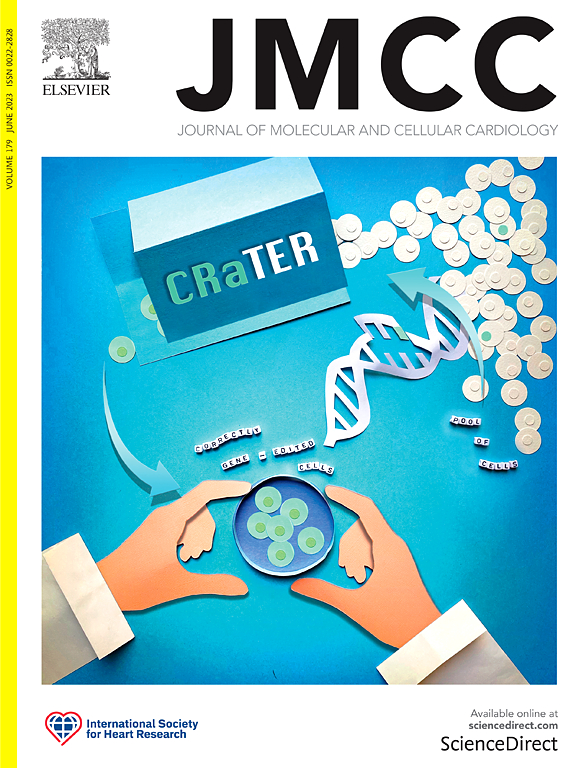BAG3-HSP70-CHIP轴控制TGFBR2在心脏成纤维细胞中的降解。
IF 4.7
2区 医学
Q1 CARDIAC & CARDIOVASCULAR SYSTEMS
引用次数: 0
摘要
转化生长因子β (TGF-β)是心脏纤维化的主要调节因子,通过II型TGF-β受体(TGFBR2)在配体结合后启动信号传导。我们之前发现了bcl2相关的协同伴侣蛋白(BAG3)通过泛素化和蛋白酶体降解作为TGFBR2的调节剂。然而,TGFBR2的E3连接酶是未知的。利用诱导多能干细胞衍生的心脏成纤维细胞,我们发现HSP70的c端相互作用蛋白(CHIP)是一种E3泛素连接酶,被BAG3利用来降解心脏成纤维细胞中的TGFBR2。CHIP的过表达显著降低了TGFBR2的稳定性,而CHIP的抑制导致对TGF-β的敏感性增加,随后促进了纤维化程序。此外,BAG3-HSP70相互作用对这一过程至关重要,因为轴的破坏增加了TGFBR2的稳定性和对TGF-β信号的敏感性。综上所述,这些发现表明BAG3-HSP70-CHIP轴控制心肌成纤维细胞中TGF-β信号,可以作为心脏纤维化的新治疗靶点。本文章由计算机程序翻译,如有差异,请以英文原文为准。

The BAG3-HSP70-CHIP axis controls the degradation of TGFBR2 in cardiac fibroblasts
Transforming Growth Factor Beta (TGF-β) is a master regulator of cardiac fibrosis, in part through the type II TGF-β receptor (TGFBR2) which initiates signaling after ligand binding. We previously identified the co-chaperone protein Bcl2-associated athanogene (BAG3) as a modulator of TGFBR2 through ubiquitination and proteasomal degradation. However, the E3 ligase of TGFBR2 was not known. Using induced pluripotent stem cell-derived cardiac fibroblasts, we identified C-terminal interacting protein of HSP70 (CHIP) as an E3 ubiquitin ligase utilized by BAG3 for TGFBR2 degradation in cardiac fibroblasts. Overexpression of CHIP significantly decreased TGFBR2 stability, while inhibition of CHIP led to increased sensitivity to TGF-β and subsequent promotion of a fibrogenic program. Further, the BAG3-HSP70 interaction was crucial to this process, as disruption of the axis increased TGFBR2 stability and sensitivity to TGF-β signaling. Together, these findings demonstrate that the BAG3-HSP70-CHIP axis controls TGF-β signaling in cardiac fibroblasts and could serve as a new therapeutic target for cardiac fibrosis.
求助全文
通过发布文献求助,成功后即可免费获取论文全文。
去求助
来源期刊
CiteScore
10.70
自引率
0.00%
发文量
171
审稿时长
42 days
期刊介绍:
The Journal of Molecular and Cellular Cardiology publishes work advancing knowledge of the mechanisms responsible for both normal and diseased cardiovascular function. To this end papers are published in all relevant areas. These include (but are not limited to): structural biology; genetics; proteomics; morphology; stem cells; molecular biology; metabolism; biophysics; bioengineering; computational modeling and systems analysis; electrophysiology; pharmacology and physiology. Papers are encouraged with both basic and translational approaches. The journal is directed not only to basic scientists but also to clinical cardiologists who wish to follow the rapidly advancing frontiers of basic knowledge of the heart and circulation.

 求助内容:
求助内容: 应助结果提醒方式:
应助结果提醒方式:


